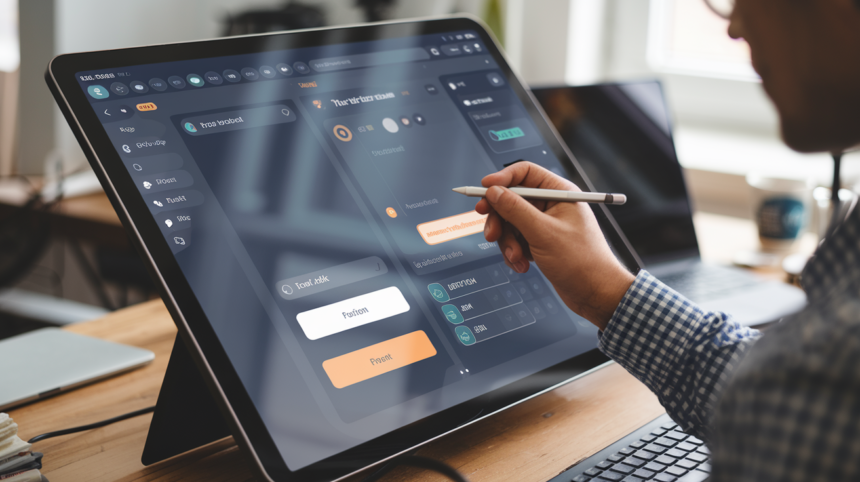The rise of touch technology has transformed the way users interact with applications. In today’s digital landscape, Touchscreen Application Development is essential for creating user-friendly interfaces that maximize engagement. With advancements in technology, the ability to develop responsive and intuitive touchscreen apps has become more accessible, opening up opportunities for developers and businesses alike. This guide will outline the crucial steps involved in developing a touchscreen application, focusing on best practices, tools, and considerations for 2024.
Defining the Purpose of the App
The first step in any app development process is to clearly define the purpose of the application. Understanding the target audience and their needs will guide the design and functionality of the app. Whether it’s a game, educational tool, or business application, identifying the core features and objectives will ensure that the development process stays focused and aligned with user expectations.
Conducting Market Research
Once the purpose is established, conducting thorough market research is vital. Analyzing competitors and existing applications can provide valuable insights into successful features and design elements. Pay attention to user reviews and feedback to identify common pain points. This research will help inform your design choices and highlight unique selling points for your touchscreen app.
Designing the User Interface
The user interface (UI) plays a significant role in the success of a touchscreen application. It should be visually appealing while also being easy to navigate. When designing the UI, consider the following:
- Layout: Organize content logically and ensure that the most important elements are easily accessible.
- Touch Targets: Design buttons and interactive elements with appropriate sizing to facilitate smooth navigation. Larger touch targets reduce user frustration.
- Color and Contrast: Use color schemes that are visually appealing but also ensure sufficient contrast to enhance readability.
Choosing the Right Development Tools
Selecting the appropriate development tools is critical for efficient touchscreen app development. Various platforms and frameworks can be utilized based on the intended use of the app and the targeted devices. Popular tools include:
- Flutter: A UI toolkit that allows for building natively compiled applications for mobile, web, and desktop from a single codebase.
- React Native: A framework that enables developers to build mobile apps using JavaScript and React, facilitating a smooth user experience on touchscreen devices.
- Unity: Ideal for developing interactive touchscreen games or applications, especially those requiring graphics and animations.
Developing the Application
With the design in place and the development tools selected, the next step is to start coding the application. During this phase, it’s essential to adhere to best practices for software development, such as:
- Modular Code: Write modular code that is easy to maintain and update. This approach enhances the overall quality and flexibility of the application.
- Regular Testing: Implement regular testing throughout the development process to identify bugs and usability issues early on. This can include unit tests, integration tests, and user acceptance tests.
Incorporating Multi-Touch Features
A key advantage of touchscreen applications is the ability to utilize multi-touch capabilities. Incorporating these features can enhance the user experience by allowing gestures like pinch-to-zoom, swiping, and multi-finger interactions. Understanding the uses of touch screens technology in terms of multi-touch functionality can lead to innovative features that set your app apart from competitors.
Beta Testing and Feedback
Once the app is developed, conducting beta testing with a selected group of users is crucial. This phase allows you to gather feedback on usability, performance, and any additional features users may desire. Analyze this feedback to make necessary adjustments before launching the application to a broader audience.
Launching the Application
After refining the app based on beta testing feedback, it’s time to launch the application. Ensure that all promotional materials are prepared, including app store descriptions, marketing graphics, and social media campaigns. Monitoring user reviews and engagement post-launch is essential for identifying areas for improvement and ensuring ongoing user satisfaction.
Maintenance and Updates
Post-launch, regular maintenance and updates are necessary to keep the application running smoothly. This includes fixing bugs, optimizing performance, and adding new features based on user feedback. Staying up-to-date with technological advancements will also ensure that your app remains competitive in the market.
Summary
In summary, Touchscreen App Development is a multi-faceted process that requires careful planning, design, and execution. By following this step-by-step guide, developers can create touchscreen applications that meet user needs and stand out in a crowded marketplace. As technology continues to evolve in 2024, leveraging innovations such as multi touch display functionality will enhance user engagement and ensure the app’s success. With a solid foundation in place, businesses can harness the power of touchscreen technology to deliver exceptional user experiences.







